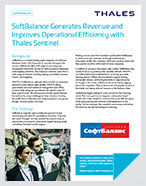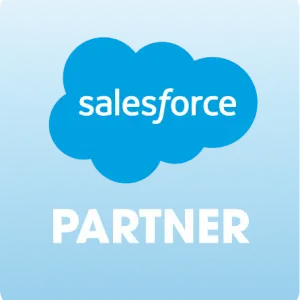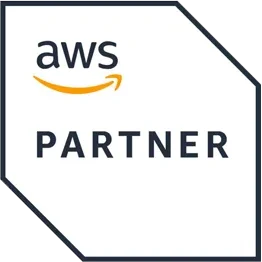When looking to increase sales, partner enablement is a tool that often gets overlooked. However, for a lot of software companies, it can have impressive ROI. By giving vendors and sales partners the tools and incentives to sell your product, you can increase sales using resources that are already at your fingertips.
What is Partner Enablement?

Partners, or channel partners, are companies that team up with a producer to sell the producer’s products or technology. They may be distributors or retailers, or service providers who include the product as part of a package.
Your partner enablement framework is the way you give these external partners the resources they need to play an active role on your sales team. That means making sure that they appropriately represent your brand, can close sales, and are motivated to tell their customers about your product. Primarily, this involves providing training and creating marketing and sales material, but you also need strong communications to ensure that your goals align.
Why Invest in Channel Partner Enablement?
Studies have found that for many B2B companies, partners account for nearly half of total sales. Partners with the right tools see faster deals, higher lifetime customer value, higher-order values, and significantly higher growth rates. Despite these results, partners still often lack support.
In most cases, these indirect sellers don’t get the same backing as in-house sales teams. Sales and marketing leaders don’t know or understand partners’ abilities and lack confidence in the external sales experience. Branded presentation templates, in-person training, courses, sales collateral, and even software often aren’t available to partner sellers.
It’s no wonder that the partner enablement process sometimes falls between the cracks. After all, out of sight, out of mind. It’s easy to forget about members of the team who aren’t members of the organization. That’s why it’s so important to be proactive about creating a partner enablement plan template and directly assigning responsibility for it.
Do You Need a Partner Enablement Team?
A few different departments may have their hands in your partner enablement activities. For example, before your partners start representing you to the public, you’ll want them to have a strong understanding of your brand and the benefits of your product. That will help keep your public image consistent and make sure you can deliver what your partners promise. Then, your partners will need access to all the same tools as both your marketing and sales teams. Because the responsibilities are so spread out, a dedicated team can be very useful in ensuring brand consistency across channels. However, any one point of contact, who can take ownership for the partner enablement job description, can accomplish the same purpose.
Building Your Brand’s Partner Program
There are many types of channel partners. The most relevant for your business depends on your industry, business model, and goals. Therefore, you’ll need to define an overall strategy and KPIs before creating your partner program. At Thales we work with several different partner channels and have learned a few of the most important questions to ask before you begin:
- Where does your product or service fit in your customers’ business model?
- Where do your customers initially interact with your brand?
- What resources (time, attention, personnel) can you invest in your partners right now and in an ongoing way?
- What can your partners do that your in-house team can’t?
- What’s in it for your partners?
Once you’ve answered those questions, you should be able to sketch a picture of your ideal partner and choose what type of partners to work with. Here are just a few of the most common examples:
VAR (Value Added Resellers) – sellers who buy your product to sell as part of a bundle with their own products or services.
Agents – representatives who act as intermediaries between you and your customers, without taking possession of the product themselves.
Affiliates– product advocates who get a commission or referral fee based on their sales.
Distributors –intermediaries between you and the partner who sells to the consumer. The distributor may have expertise in a particular market or provide additional marketing and sales support.
Resellers – partners who buy and sell your product in a specific market.
Retailers – businesses that purchase from many producers to sell directly to consumers.
Consultants –individuals who advise companies on a particular field, including suggesting relevant products and service providers.
MSP (Managed Service Providers) – organizations that oversee a particular process for consumers, and may be responsible for purchasing or recommending products and services on their behalves.
Partner Enablement Best Practices

Once you’ve built the basic structure of your partner enablement program, it’s time to start formulating your plan for making your partners as successful as possible. At this stage, your job is to provide the resources and motivation they need to sell your product or service, including:
Strong Feedback and Communication
Talk to your existing and prospective partners and ask them what they need. They’ll be happy to tell you how you can help. They’re in the best position to know what would motivate their customers to buy more, whether it’s restructured pricing, better user information, or more highly-trained partner sellers.
Note that this doesn’t end once your partners are on board. Keep getting feedback by talking to your partners, sending surveys, and reviewing sales data in detail. This will help you figure out which other partner enablement tools will be most effective.
Pricing Plans that Match Demand
Setting pricing and licensing options is a critical step in any marketing and sales process. Working with channel partners adds a few elements to the calculation. Instead of thinking of your product as an independent purchase, you’ll have to understand how it fits into the entire package that your partners offer their customers. Does it fit in the budgets of customers who are purchasing larger packages? Do you use the same pricing structure as your partners? Will your price enable your partners to sell the product and still see a profit?
Training for your Partners
Training provides the skills and information your channel partners need when they’re selling your product. It is the most extensive part of partner enablement and is critical at every stage of the partner relationship. Training can include formal education in webinars, pamphlets, or certification courses, or informal methods like good access to people who can answer questions. In whatever format, training needs to cover a few key elements.
1. Onboarding
Introduce salespeople to your brand and make sure they’re familiar with your sales processes, company structure, and the basic information about how your partnership benefits both sides.
2. Sales & Marketing Best Practices
Your partners may be experts in your field and the technicalities of your product, but not necessarily have formal training in sales or marketing. To make the most of the relationship, help them learn this set of skills and highlight the techniques that have proven most effective with your customers in the past.
3. Product Education
Keep your partners up-to-date on every detail of your product, including new features and terms of services. In addition to initial training, you may want to consider accessible reference guides and annual retraining events.
4. Branding and Goal Alignment
In order to keep your brand name and image consistent with all your customers, you’ll need to make sure that your partners are on board. A clear understanding of expectations and where they fit into your organization’s big picture will also make it easier for them to communicate enthusiastically with customers.
Sales and Marketing Enablement Tools

These resources include both the tools that your sales team uses behind the scenes and the materials they show customers. Your sales and marketing teams are likely using software to measure KPIs, manage content, and track the customer lifecycle. They may be checking things like website traffic, ads, email marketing success, and conversions. Your channel partners should be able to do all of this too. If you can, provide the same tools to your partners as to your in-house teams, or offer your partners some access to your sales dashboards. You can also make sure they know how to use them.
The same is true for the content tools you use. Materials like case studies, white papers, spec sheets, and value calculators all help your sales team show customers how valuable your product is. Giving your partners access to the material you’ve already produced is an easy way to increase sales with almost no extra effort.
Recognition and Incentives
For most channel partners, the incentives to sell your product should be built into the pricing itself. On every sale, both you and the partner should see a profit. However, you can also offer bonuses and rewards. Keep in mind, however, that rewards don’t have to be monetary. Positive recognition is a strong motivator and helps build loyalty and an emotional connection. Show appreciation for your partners one-on-one or in public forums, such as at partner seminars or on your website. You can even set up some friendly competition between partners, like Microsoft and other companies have done.
Partner Enablement: Making the Most of Your Resources
Your partners have access to customers that you can’t reach. They can sell in ways that you can’t. Strong partner enablement is an opportunity to cross-sell, upsell, and sell more to both new and existing customers. Get started by finding the Sentinel tools to will help you manage your own partner program today.

Navigate The Process of Licensing, Delivering, and Protecting Your Software - White Paper
How to Get Software Licensing Right The First TimeCheck out our practical guide to navigating the process of licensing, delivering, and protecting your software. Discover the importance of optimizing your software licensing. Avoid common mistakes with the expertise you...

Integrate a Subscription Based Model With Software Licensing - SoftBalance Case Study
Improve Efficiency With Software Licensing like SoftBalance - Case Study SoftBalance Generates Revenue and Improves Operational Efficiency with Thales Sentinel SoftBalance is a market-leading system integrator and software developer in Russia. With thousands of customers...



